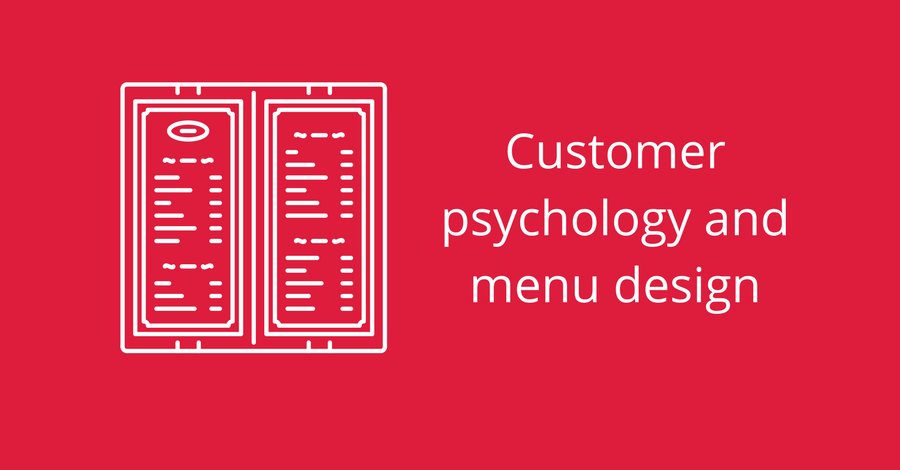
When it comes to designing your restaurant’s menu, having a deep understanding of customer psychology can be very helpful. Understanding how the human brain works allows you to increase revenue with almost no effort.
Here are 6 ways you can increase the average bill by making small changes to your menu.
Add a larger priced item
Human minds are really bad at considering absolutes. We like to compare two things, instead. In Predictably Irrational Dan Ariely talks about how a marketing firm found a way to sell a $1200 bread-maker: they added a $1600 one next to it.
When the only bread-maker is $1200, people wonder if they need a bread-maker. However, when you place it next to a $1600 bread-maker, people compare the two to see which one they want. And usually, decide on the $1200 one.
So, if you have a $30 steak that you are struggling to shift, add a $50 steak. People are reluctant to buy the most expensive item on the menu. But next to a $50 steak, a $30 one seems far more reasonable.
Put expensive items in a box
Putting a box around an item draws the customer’s attention to it. This makes them more likely to order the dish. So, if you have something you want to sell, such as high mark-up dish, put a box around it.
Desserts are usually high markup, so these make an excellent choice. However, you can put a box around individual dishes as well, and it produces the same result.
Re-do your wine list
Customers cannot tell the difference between cheap and expensive wine. Study after study has shown this. So, as long as you are selling them a decent bottle, their enjoyment of it will be primarily driven by how much they pay for it.
Many customers will order the cheapest bottle of wine. So make sure you have plenty of markup on that. However, another large selection of customers will order the second cheapest bottle of wine.
This is because they do not want to look like they are going for the cheapest bottle, even though they do not know what wine they want. Therefore, you want to ensure that the second bottle is a high markup item as well.
Finally, as we have already learnt, adding a more expensive item to the menu drives up sales of cheaper bottles. So make sure that you have at least one bottle of $300 on there.
Add more “for two” dishes
One of my local Thai restaurants has appetisers for £7. Or you can get the platter for £10. Per person. And there is a minimum of two people. So, in reality, you are paying £20.
But the menu doesn’t say that. It says £10 per person. Most people never do the maths and think “£20: I could get three of the other dish for almost the same money.”
Add to this mix the fact that couples are some of the least price sensitive customers. After all, who wants to look cheap on a date? No wonder the chateaubriand is so often priced for two.
Centre align your prices
If you put all of your prices in a neat little line, with everything right aligned, you make it very easy for the customer to compare prices between dishes.
But, of course, you probably don’t want to make this easy. Because, if you do, people will choose cheaper options. This is a shame because the more expensive items on your menu are worth the money, right? Centre align the prices so that customers consider each dish on its individual merits.
Reduce the number of items
Having two many items on your menu is a bad thing for two reasons.
One is that quality suffers. You need to be turning your stock over. If nobody is ordering the dish, the ingredients will sit in your walk-in for longer, they won’t be as fresh, and you will have higher food costs.
It also makes it more difficult for customers to decide what to have. In The Paradox of Choice, Barry Schwartz talks about a store offering free samples of jam. They found that when they offered six choices, customers bought more jam than when they offered 22 choices.
What was going on here? Customers found it difficult to choose between 22 choices. The stress of making that choice (it might sound silly, but it is stressful!) made them less likely to buy a full-sized pot of any.
Your menu is the same: if you want customers to enjoy the experience more, you need to make it easier on them. They might think they want more choice, but the research shows it makes them less happy.
Summary
Follow these six simple ideas, and you will be able to increase the average cheque size. Understanding customer psychology is the key to running a successful restaurant. The answers are not always intuitive, so it is important to look at the evidence.
Don't have time to check my blog? Get a weekly email with all the new posts. This is my personal blog, so obviously it is 100% spam free.
Tags: Restaurant Psychology
This entry was posted on Thursday, April 27th, 2017 at 11:15 am and is filed under Business & Marketing. You can follow any responses to this entry through the RSS 2.0 feed. Both comments and pings are currently closed.